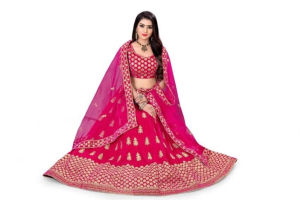Support and Style: Choosing the Best Compression Tights for Maternity

Discover the benefits and features of compression tights for maternity
Pregnancy is a beautiful yet challenging journey, with expectant mothers experiencing numerous physical changes and discomforts. One way to alleviate some of these issues is through the use of compression tights. Designed to offer support and improve circulation, compression tights maternity are a must-have item for many pregnant women. This article delves into the benefits, types, and features of compression tights for maternity, providing a comprehensive guide that surpasses the coverage found in competing articles.
Understanding the Benefits of Compression Tights
Improved Circulation and Reduced Swelling
Compression tights apply gentle pressure to the legs, promoting blood flow and reducing the risk of swelling and varicose veins, common concerns during pregnancy. Clinical studies have shown that wearing compression garments can significantly decrease the incidence of venous disorders in pregnant women.
Support for the Belly and Lower Back
Many maternity compression tights are designed with support panels that help lift the belly and reduce pressure on the lower back, offering relief from pregnancy-related back pain.
Enhanced Comfort and Mobility
With the added support and improved circulation, expectant mothers can experience enhanced comfort and mobility, making it easier to stay active during pregnancy.
Choosing the Right Type of Compression Tights
Graduated Compression
Graduated compression tights are highly recommended for maternity wear. They provide the highest level of compression at the ankle, with the pressure gradually decreasing up the leg, optimizing blood flow back to the heart.
Material and Breathability
Look for tights made from breathable, moisture-wicking fabrics to keep comfortable and dry, especially important during pregnancy when body temperature can fluctuate.
Style and Aesthetics
Maternity compression tights come in various colors and styles, allowing expectant mothers to maintain their personal style while benefiting from the support and comfort the tights offer.
Features to Consider
Adjustable Waistbands
An adjustable waistband can accommodate the growing belly throughout the pregnancy, ensuring a perfect fit from the first trimester to postpartum.
Footless vs. Footed Tights
Footless tights might be a preferable option for those who want compression only on the legs and freedom for the feet, while footed tights offer comprehensive support and can be worn like regular stockings.
Antimicrobial Properties
Considering the sensitivity of a pregnant woman's skin, choosing tights with antimicrobial properties can help prevent irritation and keep the skin healthy.
How to Wear and Care for Maternity Compression Tights
Proper Wearing Technique
To maximize benefits and avoid discomfort, it's crucial to wear compression tights correctly. It's often recommended to put them on in the morning before swelling can occur and to ensure they're smoothly fitted against the skin without any bunching.
Maintenance Tips
Follow the manufacturer's instructions for care and cleaning to maintain the elasticity and compressive properties of the tights. Generally, washing in cold water and air drying is best to preserve their lifespan.
Latest Trends and Innovations
The latest trends in maternity compression tights focus on combining medical-grade support with fashionable designs, allowing expectant mothers to feel confident and stylish. Innovations include seamless designs for added comfort, as well as eco-friendly materials that are better for the environment and safe for both mother and baby.
Conclusion
Maternity compression tights offer a blend of support, comfort, and style, making them an invaluable addition to any expectant mother's wardrobe. By choosing the right type, material, and features, pregnant women can alleviate some of the discomforts associated with pregnancy and enjoy this special time with greater ease and confidence.




